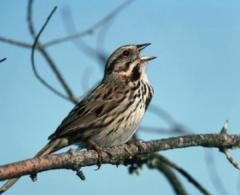
This Article From Issue
March-April 2008
Volume 96, Number 2
Page 112
DOI: 10.1511/2008.70.112
This roundup summarizes some notable recent items about scientific research, selected from news reports compiled in Sigma Xi's free electronic newsletters.
Honey, I Shrunk Our Impact
It makes sense once you think about it, but now the assertion has some numbers to back it up: Divorce is bad for the environment. Investigators studying households in 12 countries have ascertained that families that split end up using more resources. In the United States, for example, households of divorcés use about 50 percent more resources per person than those of couples before any such dissolution. In 2005 alone, more successful marriages could have saved the United States 73 billion kilowatt-hours of electricity and 627 billion gallons of water—sobering numbers to share with the next divorced environmentalist you meet.
Yu, E. and J. Liu. Environmental impacts of divorce. Proceedings of the National Academy of Sciences of the U.S.A. (Published online December 5, 2007)
Touch of Gray
It's common to look back from middle age and bemoan the slow loss of this or that natural capacity—say, physical stamina or the ability to focus one's eyes up close. Many people also suppose that their minds aren't as sharp in midlife, and some early investigations seemed to bear out this notion. But a newly published longitudinal study of tests given to Vietnam veterans almost two decades apart shows quite definitively that general intelligence does not, in fact, decline between young adulthood and middle age. And the subjects' verbal ability proved to increase over time. Like fine wine. . . .
Larsen, L., P. Hartmann and H. Nyborg. The stability of general intelligence from early adulthood to middle-age. Intelligence: 36:29-34 (January-February)
Autism's Cause Remains Elusive
Epidemiologists have long puzzled over the rising number of children afflicted by autism. One hypothesis posits that thimerosal, a mercury-containing compound used as a preservative in many vaccines, may be responsible. This worry, in part, led to the elimination of thimerosal in vaccines distributed in the United States. The hope was that this move might lead to a decline in the incidence of autism. But a recent investigation of data collected in California suggests that the elimination of thimerosal has not lowered the autism rate, which increased steadily throughout the study period (1995 to 2007).
Schechter, R., and J. K. Grether. Continuing increases in autism reported to California's developmental services system: mercury in retrograde. Archives of General Psychiatry 65:19-24 (January)
T. Rex Teen Sex
In birds, medullary bone, ephemeral bony tissue that forms in marrow cavities before ovulation, provides a source of calcium for the shells of eggs. Study of medullary bone in dinosaur fossils allows the determination of the ages at which these animals reached reproductive maturity. Earlier work had shown that Tyrannosaurus rex matured before 18 years of age, and new results for
Lee, A. H., and S. Werning. Sexual maturity in growing dinosaurs does not fit reptilian growth models. Proceedings of the National Academy of Sciences of the U.S.A. 105:582-587 (January 15)
A Star (and Planet) Is Born
Astronomers have long known that planets form from the leftovers that surround newly created stars, but until now they had never caught one in the act. Indeed, most searches for extrasolar planets have focused on stars that are at least 100 million years old, by which time the protoplanetary disks that once encircled them are long gone. But astronomers from the Max-Planck-Institut für Astronomie in Heidelberg recently uncovered a planet (about 10 times the mass of Jupiter) orbiting a newborn star—one that is only 8 to 10 million years old and still swaddled in a whorl of dust and gas. This discovery suggests that astronomers will be able to investigate the details of how planetary systems form by examining the process while it is still taking place. And, who knows, one day careful observations may also reveal how all those Starbucks keep popping into existence.
Setiawan, J., Th. Henning, R. Launhardt, A. Müller, P. Weise and M. Kürster. A young massive planet in a star-disk system. Nature 451:38-41 (January 3)
The Blind Shall See
Biologists studying 29 populations of the blind cavefish Astyanax mexicanus had previously determined that the loss of sight in this species evolved independently at least three times, meaning that some of these fish differ in the particular genetic mutations responsible for their blindness. A recent experiment showed that crossing individuals obtained from different caves produced, remarkably enough, some progeny that could see. The restoration of sight to the blind in this case is a simple consequence of the laws of Mendelian genetics. If ichthyologists had succeded in getting lame fish to walk and deaf ones to hear, now that would indeed have been a miracle.
Borowsky, R. Restoring sight in blind cavefish. Current Biology 18:R23-R24 (January 8)
You Big Rat
Children are always excited to learn about the capybara (Hydrochoerus hydrochaeris), because this inhabitant of the neotropics is the largest rodent in the world, weighing about 60 kilograms. But paleontologists have now shown that a different animal from the region—one that lived between 4 million and 2 million years ago, during most of the Pliocene period—gets the award for the largest rodent known to have ever existed: Josephoartigasia monesi. Adults weighed well over a metric ton and were the size of a bull.
Rinderknecht, A., and R. E. Blanco. The largest fossil rodent. Proceedings of the Royal Society B (Published online January 15)

American Scientist Comments and Discussion
To discuss our articles or comment on them, please share them and tag American Scientist on social media platforms. Here are links to our profiles on Twitter, Facebook, and LinkedIn.
If we re-share your post, we will moderate comments/discussion following our comments policy.